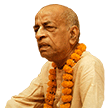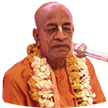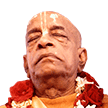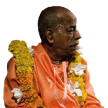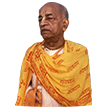Saktyavesa-avataras - an essential subject: Difference between revisions
Nayanranjani (talk | contribs) (Created page with "Category:Essential Subjects <!----------------------- edit below this line -----------------------> <!------------------------ begin introduction text below ------------...") |
(Vanibot #0041: Moves Choose Another box to the end) |
||
| Line 2: | Line 2: | ||
<!----------------------- edit below this line -----------------------> | <!----------------------- edit below this line -----------------------> | ||
<!------------------------ begin introduction text below ------------------------> | <!------------------------ begin introduction text below ------------------------> | ||
Avatara means 'incarnation', so an incarnation who represents a particular opulence of the Supreme Lord, he is known as a śaktyāveśa avatāra. There are various characteristics displayed by the avatara from which we can understand that he is a śaktyāveśa. One of them is that he will have a great influence on people, to guide them in the spiritual path, and ultimately will glorify the Supreme Lord. There are innumerable incarnations like that, one of whom is Lord Brahma (who displays vast philosophical understanding). | |||
Srila Prabhupada's books, lectures, conversations and letters offer a comprehensive presentation of this essential subject as seen in the Vaniquotes '''[[Vaniquotes:Category:Saktyavesa-avataras|Saktyavesa-avataras]]''' category. An introduction from his books is given below in the following | Srila Prabhupada's books, lectures, conversations and letters offer a comprehensive presentation of this essential subject as seen in the Vaniquotes '''[[Vaniquotes:Category:Saktyavesa-avataras|Saktyavesa-avataras]]''' category. An introduction from his books is given below in the following 8 quotes. | ||
<!-------- end introduction text and don't touch next three lines ---------> | <!-------- end introduction text and don't touch next three lines ---------> | ||
---- | ---- | ||
== Quotes from Srila Prabhupada's books == | == Quotes from Srila Prabhupada's books == | ||
<!----------------- edit quote boxes below this line -----------------> | <!----------------- edit quote boxes below this line -----------------> | ||
{{VaniQuotebox| | {{VaniQuotebox|After offering prayers to the Lord's personal expansions known as the svamsa and saktyavesa-avataras, one should pray to the weapons of Lord Narayana, such as the Sudarsana, gada, sankha, khadga and bow|One should think of Madhusūdana, Tridhāmā, Mādhava, Hṛṣīkeśa, Padmanābha, Janārdana, Dāmodara and Viśveśvara, as well as the Supreme Personality of Godhead Kṛṣṇa Himself. After offering prayers to the Lord's personal expansions known as the svāṁśa and śaktyāveśa-avatāras, one should pray to the weapons of Lord Nārāyaṇa, such as the Sudarśana, gadā, śaṅkha, khaḍga and bow. '''(Śrīmad-Bhāgavatam 6.8 Summary)'''}} | ||
{{VaniQuotebox| | {{VaniQuotebox|Being a saktyavesa-avatara, empowered by the Supreme Personality of Godhead, Prthu Maharaja did not change his spiritual position, and consequently there was no possibility of his viewing the material world as reality|A learned man does not look upon the dresses that externally cover the living entity, but sees the pure soul within the varieties of dress and knows very well that the varieties of dress are the creation of nescience (avidyā-racitam). Being a śaktyāveśa-avatāra, empowered by the Supreme Personality of Godhead, Pṛthu Mahārāja did not change his spiritual position, and consequently there was no possibility of his viewing the material world as reality. '''(Śrīmad-Bhāgavatam 4.16.19)'''}} | ||
{{VaniQuotebox| | {{VaniQuotebox|Examples of direct, or saksat, saktyavesa-avataras are the Sesa incarnation and the Ananta incarnation. In Ananta the power for sustaining all the planets is invested, and the Sesa incarnation is invested with the power for serving the Supreme Lord|Examples of direct, or sākṣāt, śaktyāveśa-avatāras are the Śeṣa incarnation and the Ananta incarnation. In Ananta the power for sustaining all the planets is invested, and the Śeṣa incarnation is invested with the power for serving the Supreme Lord. '''(Teachings of Lord Caitanya, Chapter 8)'''}} | ||
{{VaniQuotebox| | {{VaniQuotebox|Out of His causeless mercy and compassion, Krsna has compiled various Vedic literatures in His incarnation as Vyasadeva. Vyasadeva is a saktyavesa-avatara of Lord Krsna|Out of His causeless mercy and compassion, Kṛṣṇa has compiled various Vedic literatures in His incarnation as Vyāsadeva. Vyāsadeva is a śaktyāveśa-avatāra of Lord Kṛṣṇa. He has very kindly presented these literatures to awaken the conditioned soul to his senses. Unfortunately, at the present moment the conditioned souls are guided by demons who do not care to read the Vedic literatures. Although there is an immense treasure-house of knowledge, people are engaged in reading useless literature that will give them no information on how to get out of the clutches of māyā. '''(Caitanya-caritāmṛta, Madhya-līlā 20.122)'''}} | ||
{{VaniQuotebox| | {{VaniQuotebox|As far as the avesa-rupa is concerned, when Krsna empowers some suitable living entity to represent Him, that living entity is called avesa-rupa or saktyavesa-avatara|The tad-ekātma-rūpa is divided into two manifestations: the personal expansion (svāṁśa) and the pastime expansion (vilāsa). As far as the āveśa-rūpa is concerned, when Kṛṣṇa empowers some suitable living entity to represent Him, that living entity is called āveśa-rūpa or śaktyāveśa-avatāra. '''(Teachings of Lord Caitanya, Chapter 6)'''}} | ||
{{VaniQuotebox| | {{VaniQuotebox|The saktyavesa-avataras are categorized into (1) forms of divine absorption (bhagavad-avesa), such as Kapiladeva or Rsabhadeva, and (2) divinely empowered forms (saktyavesa), of whom seven are foremost|The śaktyāveśa-avatāras are categorized into (1) forms of divine absorption (bhagavad-āveśa), such as Kapiladeva or Ṛṣabhadeva, and (2) divinely empowered forms (śaktyāveśa), of whom seven are foremost. '''(Caitanya-caritāmṛta, Madhya-līlā 20.246)'''}} | ||
{{VaniQuotebox| | {{VaniQuotebox|There are various kinds of avataras, such as purusavataras, gunavataras, lilavataras, sakty-avesa avataras, manvantara-avataras and yugavataras - all appearing on schedule all over the universe|There are various kinds of avatāras, such as puruṣāvatāras, guṇāvatāras, līlāvatāras, śakty-āveśa avatāras, manvantara-avatāras and yugāvatāras—all appearing on schedule all over the universe. But Lord Kṛṣṇa is the primeval Lord, the fountainhead of all avatāras. Lord Śrī Kṛṣṇa descends for the specific purpose of mitigating the anxieties of the pure devotees, who are very anxious to see Him in His original Vṛndāvana pastimes. '''(Bhagavad-gītā 4.8)'''}} | ||
{{VaniQuotebox| | {{VaniQuotebox|When the Lord Himself comes, He is called saksat, or a direct saktyavesa-avatara, and when He empowers some living entity to represent Him that living entity is called an indirect or avesa incarnation|The śaktyāveśa incarnations are of two kinds—direct and indirect. When the Lord Himself comes, He is called sākṣāt, or a direct śaktyāveśa-avatāra, and when He empowers some living entity to represent Him that living entity is called an indirect or āveśa incarnation. Examples of indirect avatāras are the four Kumāras, Nārada, Pṛthu and Paraśurāma. These are actually living entities, but there is specific power given to them by the Supreme Personality of Godhead. When a specific opulence of the Supreme Lord is invested in specific entities, they are called āveśa-avatāras. '''(Teachings of Lord Caitanya, Chapter 8)'''}} | ||
<!----------------- edit quote boxes above this line -----------------> | <!----------------- edit quote boxes above this line -----------------> | ||
| Line 31: | Line 31: | ||
'''Saktyavesa-avataras - [[Vaniquotes:Category:Saktyavesa-avataras|explore more within this category]]'''. | '''Saktyavesa-avataras - [[Vaniquotes:Category:Saktyavesa-avataras|explore more within this category]]'''. | ||
{{EsentialSubjectTotal}} | {{EsentialSubjectTotal}} | ||
<div style="float:left;"> | |||
{{EssentialSubjectnav}} | |||
</div> | |||
__NOTOC__ | __NOTOC__ | ||
__NOEDITSECTION__ | __NOEDITSECTION__ | ||
Latest revision as of 17:25, 22 November 2020
Avatara means 'incarnation', so an incarnation who represents a particular opulence of the Supreme Lord, he is known as a śaktyāveśa avatāra. There are various characteristics displayed by the avatara from which we can understand that he is a śaktyāveśa. One of them is that he will have a great influence on people, to guide them in the spiritual path, and ultimately will glorify the Supreme Lord. There are innumerable incarnations like that, one of whom is Lord Brahma (who displays vast philosophical understanding).
Srila Prabhupada's books, lectures, conversations and letters offer a comprehensive presentation of this essential subject as seen in the Vaniquotes Saktyavesa-avataras category. An introduction from his books is given below in the following 8 quotes.
Quotes from Srila Prabhupada's books
Saktyavesa-avataras - explore more within this category.
Vanipedia has now over 903 introductory articles compiled from Srila Prabhupada's books under the series titled Essential Subjects. All these articles can be seen in the Table of Content on the right side of this article and also here in this Umbrella Category. Browse through them to relish the breadth and depth of Srila Prabhupada's teachings - There is a subject for everyone.
